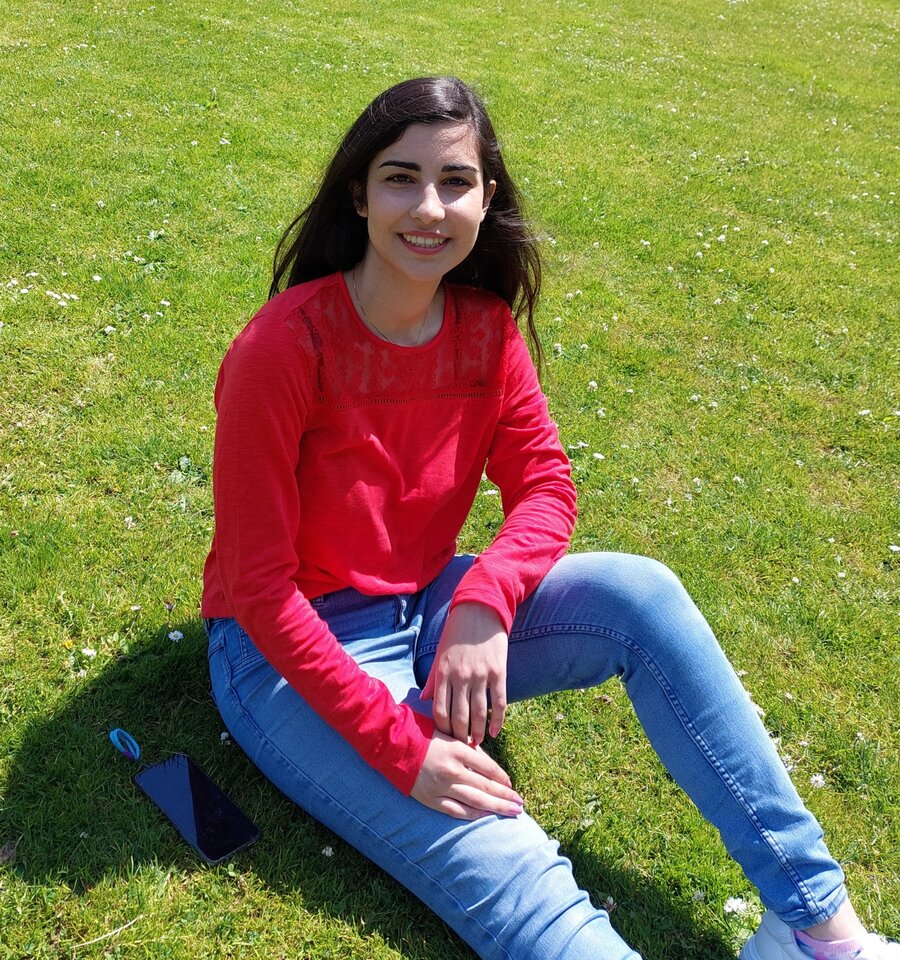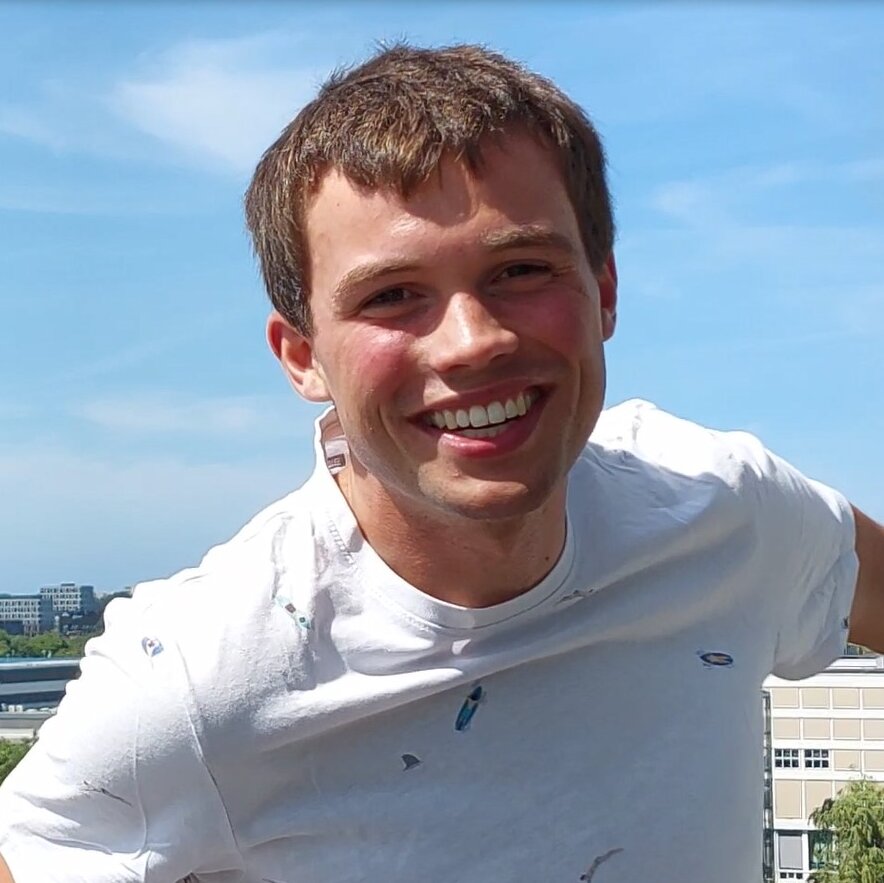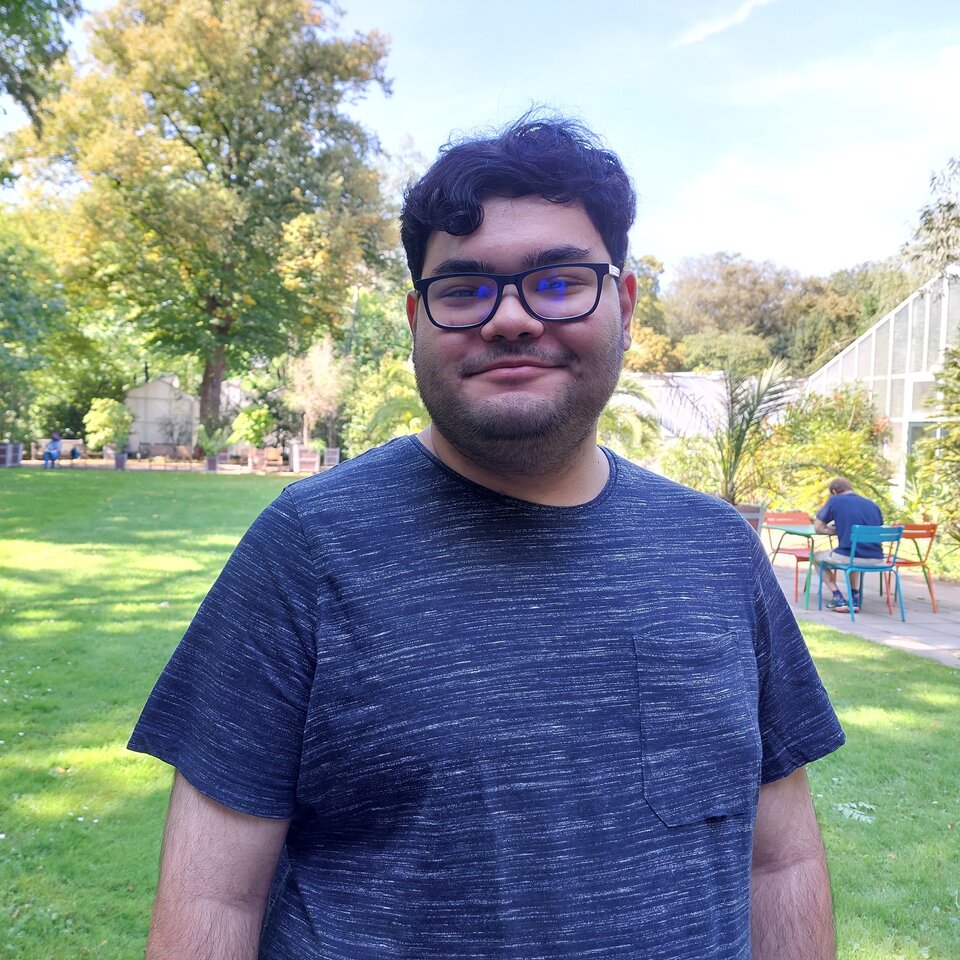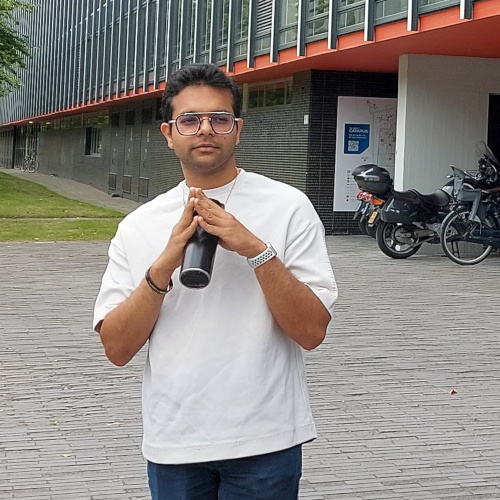Earthquakes are devastating and every year they claim thousands of lives worldwide. The damage to homes, buildings, and infrastructure is unimaginable. In the Netherlands earthquakes are also a real threat, as we saw in Groningen. Bradley van Hooff, master's student in Applied Mathematics, studies how to use mathematics to predict vibrations in buildings and how dampers can keep these structures stable.
What do you love about maths?
That's actually quite a philosophical question. The nice thing about maths is that it is always accurate. I already discovered that in middle school. It's very calculable. When you arrive at an answer, it's just completely reducible. All the steps are verifiable and I find that a nice certainty. And I really like to have that certainty.
Why did you choose the Bachelor in Applied Mathematics?
I really like mathematics. But I actually also really like physics, and chemistry. That's why I hesitated a lot. And that’s why I did an online trial study at EEMCS, both for physics and mathematics. And when I really got into it, I noticed that I like maths much more. And maths turned out to have all kinds of applications too, so that's really fun. I think the trial study takes about two or three weeks, and it takes you a few hours a week. You get explanations online and you have to do assignments. For maths, that was really fun. And I also really recommend going to an open day to get to know the campus, or follow a real-life trial study(day) to get a feel for the atmosphere of the study.
How did the bachelor's prepare you for the Master's in Applied Mathematics?
In the bachelor's, you start with very general mathematics. You learn something from every branch there is within mathematics, and that way you find out what you like and what you are good at. For the master's there are seven tracks to choose from and I chose the partial differential equations track. Because I also really liked the partial differential equations subject!
A differential equation is an equation that shows how something changes over time. An example is algae: Algae multiply, and with a differential equation you can see how they evolve over time. Using a differential equation, you can fill in how many algae you start with. And then those algae follow a certain pattern given by the differential equation. Using that differential equation, you can see for each point in time how many algae are added. I also used differential equations for my Bachelor's final project.
What kind of Bachelor project did you do?
The aim of my bachelor's end project was to mathematically calculate exactly what happens to a building during an earthquake. An earthquake can cause a building to vibrate tremendously; even if that earthquake actually vibrates just a little bit. This is due to resonance. This means that a vibrating object can make another object vibrate. During my presentation, I gave the example of a key hanging from a shoelace. If I just randomly vibrated with the shoelace, not much happened, but if I vibrated at a certain frequency, the key went back and forth very fast.
An earthquake - just like my hand holding a shoelace - has a certain frequency, and a building has its own frequency. And just like with the shoelace, if the frequency of the earthquake gets too close to the building's own frequency (so-called eigenfrequencies), it creates vibrations that get worse and worse. Therefore, it is important to investigate the eigenfrequencies of a building, which depend on the number of floors of a building. Using a differential equation, I created a model that represents what happens to the different floors of a building during an earthquake. Using this model, I also investigated the effect of adding dampers to this model.
The aim of my bachelor's project was to mathematically calculate exactly what happens to a building during an earthquake. […] I created a model that represents what happens to the different floors of a building during an earthquake. Using this model, I also investigated the effect of adding dampers to this model.
What are dampers?
Dampers are devices that can be placed in a building to counteract vibrations. Different dampers try to absorb the energy of vibrations in different ways. In this way, the dampers ensure, that a building remains stable. In my research, I looked at the effect of two different dampers, namely the viscoelastic damper and the Tuned Mass Damper. The viscoelastic damper is made of a material similar to a bicycle seat. When you press it, it is flexible, but the material also wants to return to its original position. And the Tuned Mass Damper tries to counteract the building's own-frequency vibrations. An example of a Tuned Mass Damper is a pendulum, which is basically just like a clock that has a pendulum. The pendulum is free to swing back and forth and the movement of the mass is used to counteract the vibrations of the building.
My research question was: what is the best damper for damping earthquake vibrations for a building? And my research showed that the viscoelastic damper works a lot better, because it really dampens the vibrations for whatever frequency. The Tuned Mass Damper can dampen a building's eigenfrequency very well - and that's important too because that's exactly the vibration that causes the problems - but the Tuned Mass Damper does add new eigenfrequencies.
I like that I was able to explore this with a mathematical model. I created a code for this on the computer, and for low-rise buildings I calculated exactly how the dampers dampen the vibrations. Using a model means there is no need to do a test in real life, in which actual vibrations are generated, and dampers are tested. Because that can make buildings collapse. Which is a terrible waste of material and makes it difficult to repeat these studies more often.
What do you like about studying at TU Delft?
I like that all the teachers are very approachable. If you have a question, you can go to them and you are always taken seriously. The masters can be quite difficult sometimes. This is mainly because you have to do a lot of work, and the maths is sometimes quite complicated. If you finish the bachelor programme, then you are ready for the master's. And the support from lecturers is really nice.
Also, at TU Delft I was a student assistant communications officer. I really enjoyed doing that as well. As a student assistant, I respond via e-mail to questions from prospective students about our bachelor's programmes, for example. I also help organise the Bachelor Open Days. I also really enjoy the Open Days because prospective students often have a lot of questions about maths. And then I can talk about how much fun maths is!
And I also really enjoy being in a sports club alongside my studies. The sports club allows you to relax and also have fun with other students, and gain even more social contacts.
What are your plans for the future?
I will soon be doing a Student Exchange programme in Switzerland at EPFL in Lausanne. I am going to take maths courses that go a little deeper into the material than I have already had here in Delft. After that, I am going to do my thesis research project at a company. I am looking into options for companies now, what the possibilities are for this.
After my master's, I want to work. Maybe at a company that makes models with mathematics. I'm not quite sure about that yet. I'm still exploring the possibilities for that too. Because a lot is possible after this study!







